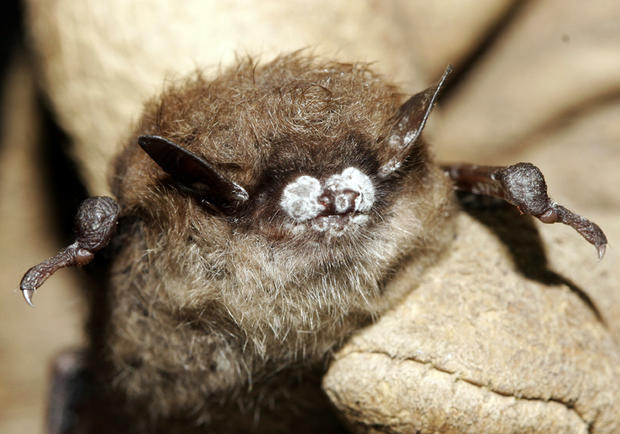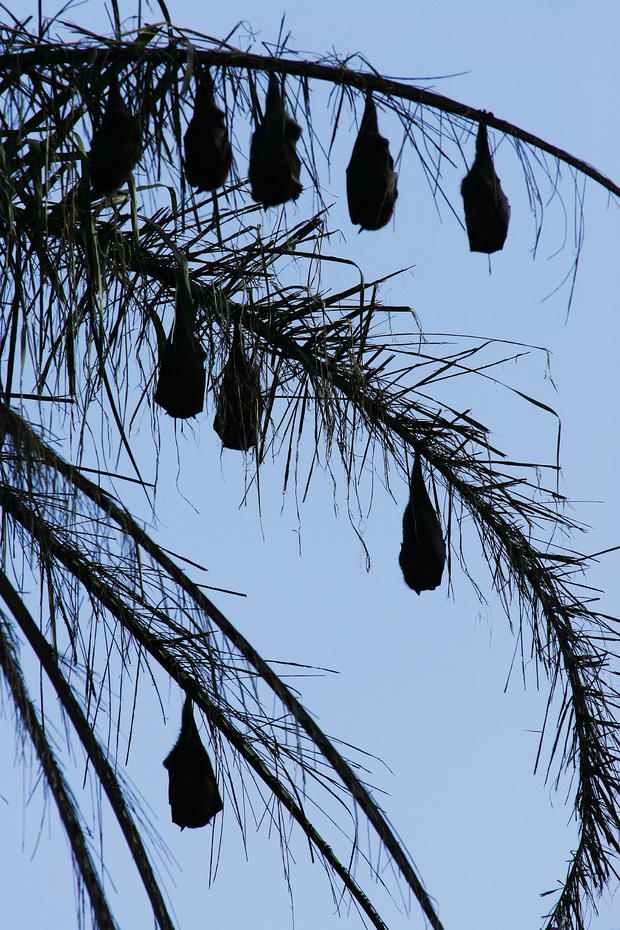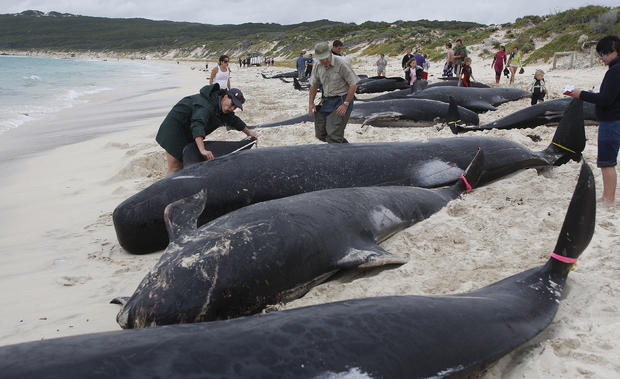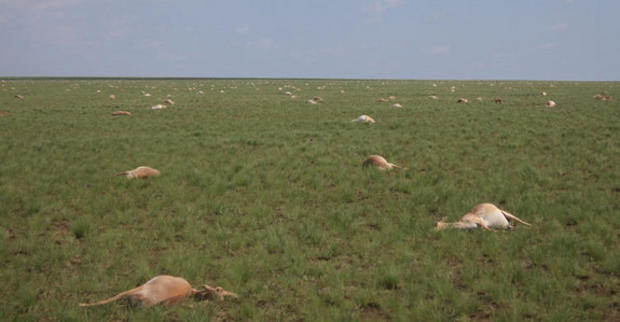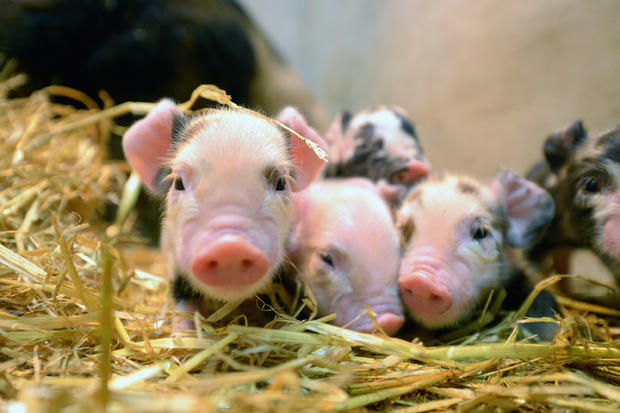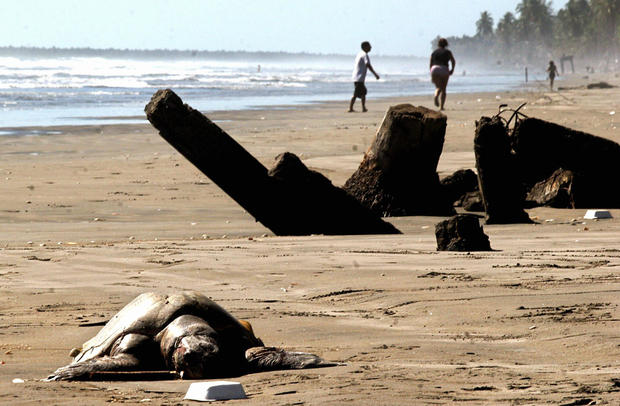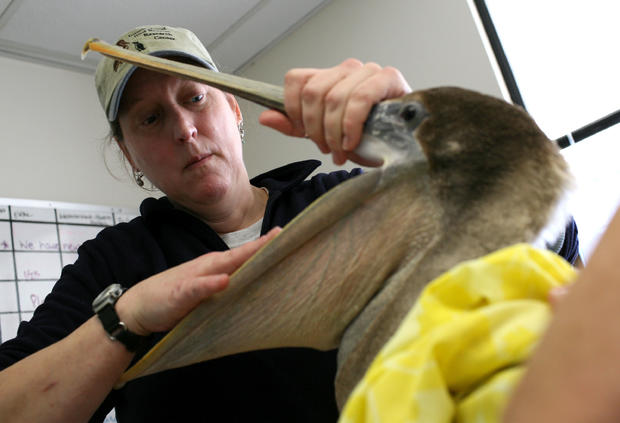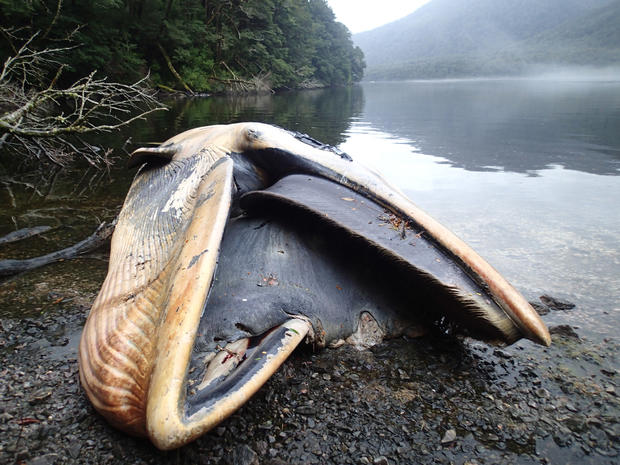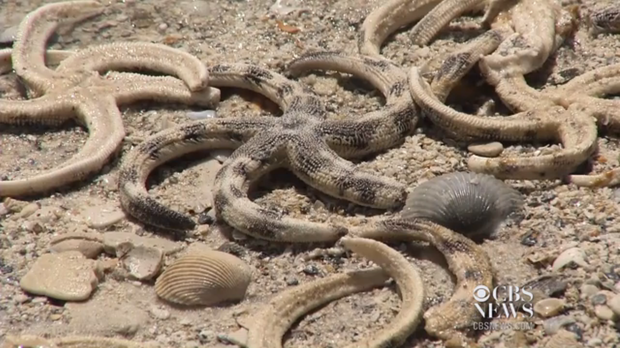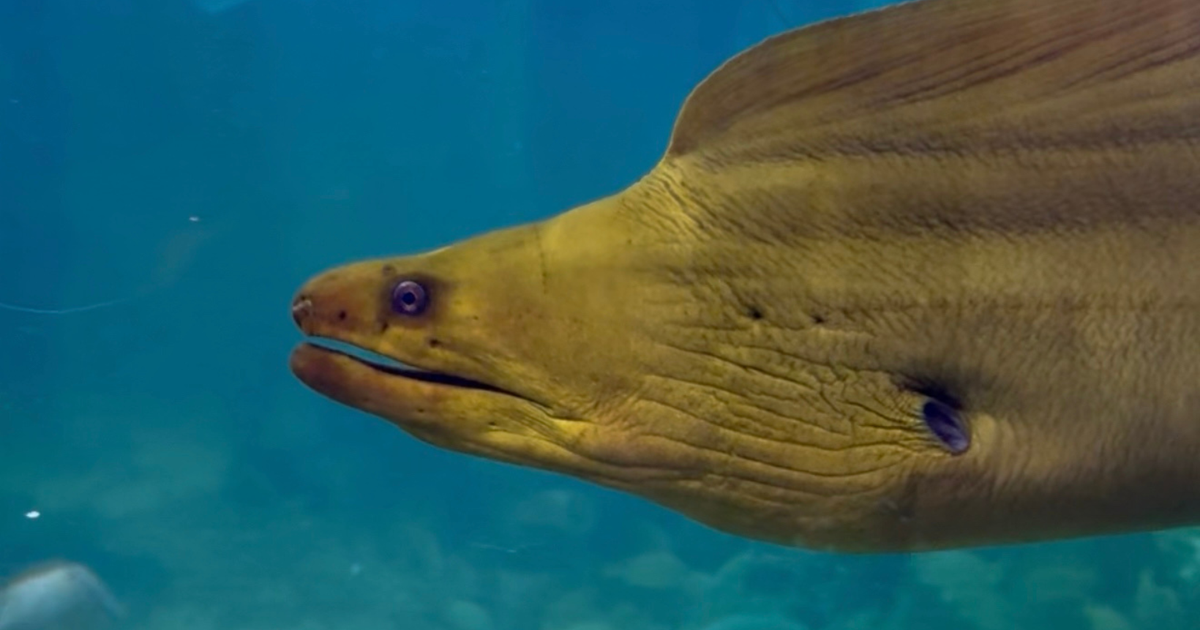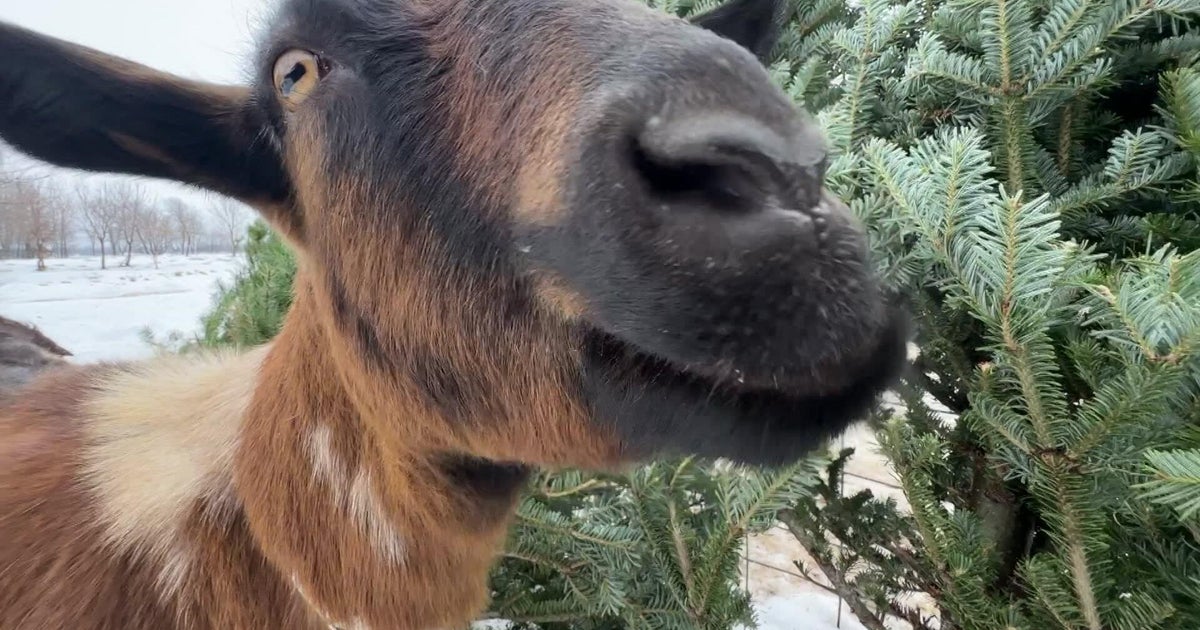Mysterious mass animal deaths
The death of an animal can be a heartbreaking event. So, when thousands of them die seemingly at once, people across the globe are left saddened and stunned, searching for answers. And unfortunately, due to disease, climate change and a range of other factors, these sorts of horrific and puzzling mass animal die-offs have actually been on the rise.
In July 2010, for example, about 500 dead Magellan Penguins washed up on the shores of Brazil over the course of just 10 days. Autopsies on the animals revealed that their stomachs were entirely empty, indicating that they likely starved to death. While there was much speculation over what caused such a mass starvation -- strong currents? colder-than-normal waters? overfishing of their food? -- the exact reason may never be known.
Fungus kills over six million bats
Over six million North American bats have been killed since 2007 by a mysterious fungus, known as white-nose syndrome, which fatally affects bats in two ways. It destroys the fragile tissue of their wings, making it impossible for them to fly and hunt insects. And it causes so much discomfort while they're hibernating that it wakes them up, burning precious calories and forcing them outside in the dead of winter, where they die of starvation after a fruitless search for food.
Bats on the brink
Experts in the U.S. are desperately racing to get to the bottom of the deadly fungus, before it causes the complete extinction of the species, known as little brown bats. They are tagging the bats with tiny transmitters, even running blood tests and infrared light analyses on the animals' immune systems. But so far, little is known, and white-nose syndrome remains one of the most devastating mysteries in the natural world.
Hundreds of pilot whales beach
In November 2004, 115 pilot whales and bottlenose dolphins died after swimming onto beaches on two southern Australian islands. A year earlier, 110 pilot whales and 10 bottlenose dolphins died when they were stranded on Tasmania's remote west coast in a similar mass casualty event.
In November 2008, the tragic mass deaths continued, when 150 long-finned pilot whales died after inexplicably beaching on a rocky coastline in Tasmania. Then, in 2009, it happened again. Nearly 200 whales and several dolphins beached in Tasmania, as rescue workers raced to save as many as they could.
Billions of honey bees disappear
In 2006, billions of American honey bees started mysteriously disappearing, and no one really knows why. Is it because of a fungal infection? Widespread pesticide use? Climate change? Scientists deemed the mysterious disease that claims about a third of the U.S. honey bee population each year, colony collapse disorder, and they have been desperately trying to get to the bottom of it for years.
If they don't soon, the nation's food supply could be severely impacted, since bees are so crucial to pollination.
Mongolian livestock die in freeze
In 2010, for the second year in a row, the poor landlocked country of Mongolia was hit with a devastating dzud, a slow natural disaster in which extreme summer drought is followed by extreme winter.
By March 2010, the sustained cold had claimed the lives of 1.7 million livestock; a crisis not only because of its inherent tragedy, but because more than one-third of the Mongolian people depend on livestock for a living. Many attribute the bitter freeze to climate change, and predict that Mongolia is headed for another devastating dzud in 2015.
Southern blackbirds fall from the sky
At around 11pm on December 31, 2010, approximately 2,000 red-winged blackbirds fell dead out of the sky over a small Arkansas town about 40 miles northeast of Little Rock. There were so many that it took workers two days to remove all the birds' carcasses from the town's streets, sidewalks and lawns. The deaths were all the more mysterious because the birds in question don't normally fly at night. So, they should have been asleep in their roost.
None of the dead birds were found on the ground of the wooded area where they roosted, so officials ruled out disease or poisoning as the cause of their deaths. Instead, it was assumed a weather-related event caused the mysterious mass die-off. Despite that assumption, however, workers cleaning up the birds' carcasses wore environmental-protection suits just in case.
Raining dead birds in Louisiana
Three days later, on January 2, 2011, a mix of 500 red-winged blackbirds and starlings fell out of the sky dead over a quarter-mile stretch of highway in Pointe Coupee Parish, Louisiana. Exams showed that the birds had suffered internal injuries that led to deadly blood clots.
Experts concluded that the birds were likely hit by celebratory fireworks, which fatally bruised them. Many on the internet, however, speculated that the mysterious mass animal deaths in Arkansas were signs of the apocalypse.
100,000 drum fish die in AR river
While birds were mysteriously falling out of the sky in Arkansas during the first week of 2011, 100,000 drum fish turned up dead in a river in the northwestern section of the state. Officials couldn't determine for sure what killed the fish, but they noted that contaminated water likely wasn't the cause because that would have affected more than just one species.
60,000 antelope die in four days
In May 2015, 60,000 saiga antelope died in just four days, and no one really knows why.
Saiga -- a species of dog-sized antelope with Gonzo-like noses, native to central Asia -- are critically endangered. So, when nearly half their numbers died off practically simultaneously, representatives from Russia, Kazakhstan, Uzbekistan, Mongolia and China held an emergency meeting to figure out why.
Half an endangered species gone
The best they could determine, however, was that the animals died from some combination of disease coupled with changes in weather or vegetation... another mysterious mass animal death for the books.
Uganda's hippos poisoned
In 2004, 194 of Uganda's hippos and 14 of the country's buffalos died over the course of just a few months. After months of testing, it was determined that the animals died after drinking water contaminated with anthrax.
6 million piglets die in less than a year
In May 2013, a virus never before seen in the U.S., called porcine epidemic diarrhea, quickly spread to 27 states and claimed the lives of six million piglets in less than a year.
Scientists think the virus, which does not infect humans or other animals, came from China, but it's unclear how it got into the country and wiped out at least three percent of the nation's pig herd.
Virus kills 6 million pigs
Farmer and longtime veterinarian Craig Rowles, seen here, did all he could to prevent PED from spreading to his farm in Iowa, the top U.S. pork producer and the state hardest hit by the disease. He trained workers to spot symptoms, had them shower and change clothing before entering barns, and limited both deliveries and visitors.
Despite his best efforts, the deadly diarrhea spread to his farm in November 2013, killing 13,000 animals in a matter of weeks, most of them less than 2 weeks old.
Millions of sardines wash up in CA
In March 2011, boaters awakened to find millions of dead anchovies and sardines washed up around their vessels in a Southern California marina. The fish were so thick in some places that boats couldn't get out of the marina.
While there's really no way for experts to know for sure, it's believed the fish either moved into the harbor to escape a red tide, or swam there to take shelter from larger fish and marine animals. High winds then apparently trapped them there, and the fish suffocated after using up all the available oxygen in the water.
200 endangered turtles found dead
In late 2005 and January 2006, 200 endangered sea turtles were found dead along beaches on the coast of El Salvador. Scientists' best guess at to the cause of this mysterious die-off is that the turtles fell victim to harmful algal blooms, known as a red tide. According to NOAA, climate change can affect the occurrence, severity, and impacts of such algal bloom events.
Hundred of Pelicans die in CA
In January 2009, hundreds of Brown Pelicans were found dead or acting peculiar along the California coast. Though researchers were unclear as to what exactly triggered the birds' illness, the mysterious mass die-off may have been due to unseasonable weather patterns that threw off the Pelicans' eating habits.
Here, a sick Brown Pelican is examined at the International Bird Rescue Research Center in Fairfield, California.
337 sei whales beach in Chile
In June 2015, scientists on an observation flight over the fjords in Chile's southern Patagonia region discovered 337 sei whales beached on the coast in one of the biggest whale strandings ever recorded. The animals' cause of death is still unknown, but human intervention has been ruled out.
Dead starfish washing ashore
In April 2014, thousands of dead and dying starfish began washing ashore in Alabama and Florida. While no one really knows for sure, marine experts believe the deaths were most likely caused by rough surf associated with strong storms that may have pushed the starfish over sandbars and onto the beaches.
Common murres seabird
Federal scientists in Alaska are looking for the cause of a massive die-off of one of the Arctic's most abundant seabirds, the common murre. More than 8,000 of them were found dead on a beach in Whittier, Alaska, in January 2016. "That's unprecedented, that sheer number in one location is off the charts," said John Piatt, research wildlife biologist at the U.S. Geological Survey's Alaska Science Center.
Scientists believe warmer water surface temperatures, possibly due to global warming or the El Nino weather pattern, may have made the birds' prey scarce, leading to starvation.


